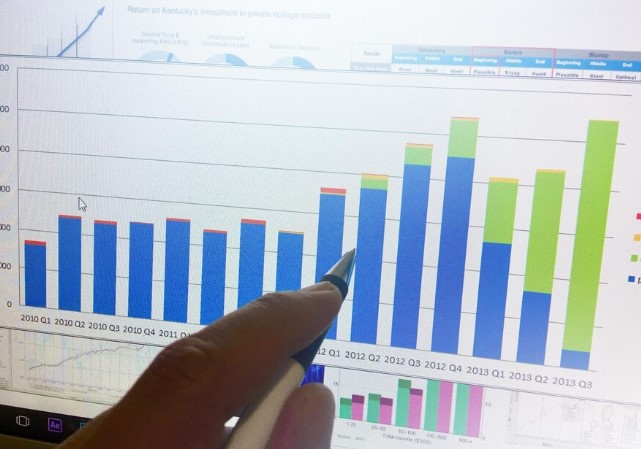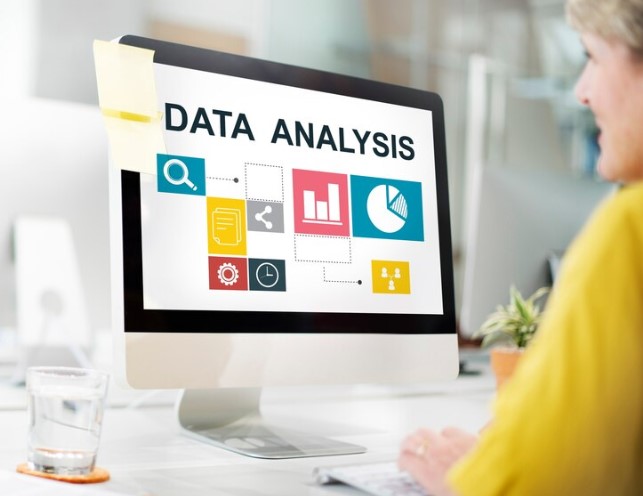Long-term economic forecasts play a crucial role in shaping strategic decisions across industries, governments, and financial institutions. Unlike short-term projections that focus on immediate trends and developments, long-term forecasts provide insights into future economic conditions spanning years or even decades. These forecasts consider a wide range of factors, including demographic shifts, technological advancements, environmental changes, and policy reforms, to predict the trajectory of key economic indicators such as GDP growth, inflation rates, employment levels, and global trade patterns.
The importance of long-term economic forecasting lies in its ability to help policymakers and businesses plan for potential economic shifts. Governments use these forecasts to craft fiscal and monetary policies, design social programs, and manage national resources. Businesses and investors rely on them to assess market risks, allocate capital, and identify growth opportunities in emerging sectors. By looking beyond immediate fluctuations, long-term economic forecasts can provide a clearer view of structural trends and challenges that may define the global economy in the future.
However, long-term economic forecasts are inherently uncertain. The further into the future predictions are made, the more difficult it becomes to account for unexpected events, such as political upheavals, technological breakthroughs, or environmental crises. Nevertheless, by analyzing historical data and identifying patterns, economists and analysts can offer valuable projections that inform strategic planning and risk management. Understanding the methodologies behind these forecasts and their potential limitations is key to leveraging their insights for long-term success.
Definition of Long-Term Economic Forecasts
Long-term economic forecasts typically refer to predictions about economic indicators such as gross domestic product (GDP), inflation rates, unemployment levels, and other macroeconomic variables over extended time horizons, often spanning several years or even decades. These forecasts are essential for various stakeholders, including government agencies, financial institutions, corporations, and non-profit organizations, as they rely on these projections to make informed decisions regarding resource allocation, policy formulation, and strategic planning.
Importance of Long-Term Forecasts
The significance of long-term economic forecasts cannot be overstated. They serve as foundational inputs for:
- Policy Making: Governments utilize these forecasts to design fiscal and monetary policies aimed at stabilizing the economy and promoting growth.
- Investment Decisions: Investors and financial analysts depend on long-term forecasts to assess the viability of investment opportunities and to manage risks associated with market fluctuations.
- Business Strategy: Companies leverage economic forecasts to plan for future demand, optimize supply chains, and make capital investment decisions.
Despite their importance, the inherent uncertainties in long-term economic forecasting present substantial challenges. Factors such as data limitations, model uncertainty, and unpredictable external shocks can lead to significant deviations from actual economic outcomes. As such, economists and analysts must navigate these complexities to enhance the reliability of their forecasts.
Also Read: How Accurate Are Economic Forecasts in Predicting Recessions

Current State of Long-Term Economic Forecasts
Today, long-term economic forecasting is characterized by a diverse array of methodologies and approaches. Some of the most commonly used methods include:
Econometric Models: These models utilize statistical techniques to estimate relationships between economic variables. They often rely on historical data to predict future trends. For example, models may analyze the relationship between interest rates and inflation to forecast future economic conditions.
Structural Models: These models are based on economic theories that describe how different sectors of the economy interact. They incorporate various economic relationships and constraints, allowing for a more comprehensive understanding of the economy.
Time-Series Analysis: This method involves analyzing historical data to identify patterns and trends over time. Time-series models can be particularly useful for forecasting cyclical economic indicators, such as GDP growth or unemployment rates.
Qualitative Forecasting: In some cases, economists may rely on expert judgment and qualitative assessments to make predictions, especially when data is scarce or when dealing with unprecedented events. This approach can include surveys of business sentiment or expert panels.
Scenario Analysis: This technique involves creating multiple potential future scenarios based on different assumptions about key economic drivers. By exploring various outcomes, economists can better understand the range of possible futures and the associated risks.
Major institutions involved in long-term economic forecasting include:
- International Monetary Fund (IMF): The IMF publishes the World Economic Outlook, which provides comprehensive forecasts for global economic growth and inflation.
- World Bank: The World Bank offers forecasts and analysis on economic development, particularly in low- and middle-income countries.
- National Governments: Many countries have their own economic forecasting agencies, such as the Congressional Budget Office (CBO) in the United States, which provides long-term economic projections to inform policy decisions.
Despite the advancements in forecasting methodologies, the landscape remains complex and challenging. Economists and analysts must continuously adapt their approaches to account for changing economic conditions, emerging trends, and unforeseen events.
Key Challenges in Long-Term Economic Predictions
Long-term economic forecasting is inherently complex, and economists and analysts face several significant challenges that can hinder the accuracy and reliability of their predictions. Understanding these challenges is crucial for improving forecasting methodologies and outcomes.
Data Limitations
Availability and Quality: Reliable data is the backbone of any economic forecast. However, data may be incomplete, outdated, or not collected consistently across different regions or sectors. For instance, emerging economies may lack comprehensive statistical systems, making it difficult to obtain accurate economic indicators.
Timeliness: Economic data is often released with a lag, which can lead to outdated information being used in forecasts. This delay can be particularly problematic during periods of rapid economic change, where timely data is essential for accurate predictions.
Granularity: Many economic indicators are reported at an aggregate level, which may mask important sector-specific trends. For example, national GDP figures may not reflect regional disparities that could influence local economic conditions.
Model Uncertainty
Model Selection: The choice of forecasting model can significantly impact the results. Different models may yield varying predictions based on their underlying assumptions and methodologies. For instance, a structural model may provide different insights compared to a time-series model, leading to divergent forecasts.
Parameter Estimation: Accurately estimating the parameters of a model is critical for its effectiveness. However, parameter estimates can be sensitive to the data used, and small changes in the input data can lead to large variations in the output.
Overfitting: There is a risk of overfitting models to historical data, which can result in poor predictive performance when applied to future scenarios. This occurs when a model captures noise rather than the underlying economic relationships.
Changing Economic Conditions
Technological Advancements: Rapid technological changes can disrupt traditional economic patterns. For example, the rise of e-commerce has transformed retail, affecting employment and consumer spending in ways that may not be fully captured in existing models.
Globalization: The interconnectedness of global economies means that local economic conditions can be influenced by international events. For instance, trade disputes or geopolitical tensions can have ripple effects that complicate long-term forecasts.
Demographic Shifts: Changes in population dynamics, such as aging populations or migration trends, can significantly impact labor markets and economic growth. These shifts may not be adequately accounted for in traditional forecasting models.
External Shocks
Natural Disasters: Events such as hurricanes, earthquakes, or pandemics can have immediate and profound effects on economies. The COVID-19 pandemic, for example, disrupted global supply chains and altered consumer behavior, leading to significant economic downturns that were not anticipated in pre-pandemic forecasts.
Political Events: Elections, policy changes, and geopolitical tensions can create uncertainty that complicates long-term predictions. For instance, changes in trade policy can alter the economic landscape, impacting everything from inflation to employment rates.
Further Read: The Role of Globalization in Shaping Global Public Health

Uncertainties in Long-Term Economic Predictions
Long-term economic predictions are not only challenged by data limitations and model uncertainties but are also fraught with various uncertainties that can significantly affect the accuracy of forecasts. Understanding these uncertainties is essential for economists and analysts as they navigate the complexities of economic forecasting.
Policy Changes
- Regulatory Shifts: Sudden changes in government policy, such as tax reforms or new regulations, can have immediate effects on economic activity. For example, the implementation of tariffs can increase costs for businesses and consumers, leading to inflationary pressures that were not anticipated in earlier forecasts. The challenge lies in accurately predicting the timing and impact of these policy changes on the economy.
- Monetary Policy Adjustments: Central banks play a crucial role in shaping economic conditions through their monetary policy decisions. Changes in interest rates can influence borrowing costs, consumer spending, and investment. However, the timing and magnitude of these changes can be difficult to predict, especially in response to evolving economic indicators. For instance, the Federal Reserve’s decisions regarding interest rate cuts or hikes can have far-reaching implications for economic growth and inflation, making it challenging to incorporate these factors into long-term forecasts.
Global Interdependencies
- Economic Interconnectedness: The global economy is increasingly interconnected, meaning that economic conditions in one country can have ripple effects across the world. For example, a slowdown in China’s economy can impact global demand for commodities, affecting prices and economic growth in other countries. This interconnectedness complicates forecasting, as analysts must consider not only domestic factors but also international developments that could influence their predictions.
- Trade Relations: Changes in trade policies, such as tariffs or trade agreements, can create uncertainties in long-term forecasts. For instance, escalating trade tensions between the U.S. and China have led to shifts in supply chains and altered trade flows, which can impact economic growth and inflation in both countries and beyond. The unpredictability of trade negotiations adds another layer of complexity to economic forecasting.
You can Also Read: The Cultural Impacts of Globalization on Local Communities
External Shocks
- Natural Disasters: Events such as earthquakes, hurricanes, and pandemics can have immediate and profound impacts on economies. For example, the COVID-19 pandemic led to unprecedented disruptions in global supply chains, labor markets, and consumer behavior, resulting in economic downturns that were largely unpredicted in pre-pandemic forecasts. The sudden nature of these shocks makes it difficult to incorporate them into long-term models.
- Geopolitical Events: Political instability, conflicts, and changes in government policies can create significant uncertainty. For instance, ongoing geopolitical tensions, such as those arising from the Russia-Ukraine conflict, can lead to fluctuations in energy prices and trade dynamics, which in turn affect inflation and economic growth forecasts. The unpredictability of such events complicates the forecasting landscape, as analysts must account for potential escalations or resolutions that could alter economic conditions dramatically.
Strategies to Mitigate Challenges and Uncertainties
Given the complexities and uncertainties inherent in long-term economic forecasting, economists and analysts can adopt several strategies to enhance the reliability of their predictions. These strategies focus on improving data collection, diversifying models, and continuously monitoring economic conditions. Below are detailed approaches that can help mitigate the challenges faced in long-term economic predictions.
Improving Data Collection and Analysis
- Utilize Big Data: Leveraging big data analytics can provide more comprehensive insights into economic trends. By analyzing large datasets from various sources, including social media, transaction data, and IoT devices, economists can gain a better understanding of consumer behavior and market dynamics.
- Enhance Data Quality: Investing in better data collection methods and ensuring the accuracy and consistency of data can significantly improve forecasting outcomes. This includes using advanced statistical techniques to clean and validate data before analysis.
- Real-Time Data Monitoring: Implementing systems for real-time data collection can help economists respond more quickly to changing economic conditions. For instance, using high-frequency economic indicators can provide timely insights that traditional data sources may miss.
Model Diversification
- Employ Multiple Forecasting Models: Using a variety of forecasting models can help capture different aspects of economic behavior. By comparing results from econometric, structural, and time-series models, analysts can identify a range of potential outcomes and reduce reliance on a single model.
- Scenario Planning: Developing multiple scenarios based on different assumptions about key economic drivers can help analysts prepare for various potential futures. This approach allows for a more nuanced understanding of risks and uncertainties, enabling better strategic planning.
- Stress Testing: Conducting stress tests on economic models can help identify vulnerabilities and assess how different shocks (e.g., financial crises, policy changes) might impact forecasts. This practice can enhance the robustness of predictions by preparing for extreme but plausible scenarios.

Continuous Monitoring and Revision
Adaptive Forecasting Techniques: Implementing adaptive forecasting methods allows economists to update their predictions as new data becomes available. This flexibility is crucial in a rapidly changing economic environment, where conditions can shift unexpectedly.
Regular Review of Assumptions: Periodically revisiting the assumptions underlying forecasts can help ensure they remain relevant. As economic conditions evolve, analysts should adjust their models to reflect new realities, such as changes in consumer behavior or technological advancements.
Engage with Stakeholders: Collaborating with industry experts, policymakers, and other stakeholders can provide valuable insights that enhance forecasting accuracy. Regular consultations can help economists stay informed about emerging trends and potential disruptions.
Incorporating Behavioral Insights
- Behavioral Economics: Integrating insights from behavioral economics can improve understanding of consumer and investor behavior. By considering psychological factors that influence economic decisions, analysts can develop more accurate forecasts.
- Sentiment Analysis: Utilizing sentiment analysis tools to gauge public sentiment and consumer confidence can provide additional context for economic predictions. Monitoring social media and news sentiment can help identify shifts in public perception that may impact economic activity.
Read More: Why Globalization Is Key to International Cooperation
Conclusion
Long-term economic forecasting is a vital tool for policymakers, investors, and businesses, yet it is fraught with challenges and uncertainties that can significantly impact its accuracy. As we have explored throughout this article, these challenges stem from data limitations, model uncertainties, changing economic conditions, behavioral factors, and external shocks. However, by adopting strategic approaches, economists and analysts can enhance the reliability of their forecasts.
As the global economy continues to evolve, the importance of robust long-term economic forecasting will only increase. By leveraging advancements in data analytics, technology, and behavioral economics, economists and analysts can improve their forecasting capabilities. Ultimately, the goal is to provide more accurate and reliable predictions that can inform decision-making and contribute to economic stability and growth.
In conclusion, while the challenges and uncertainties in long-term economic forecasting are significant, they are not insurmountable. Through strategic approaches and a commitment to continuous improvement, economists and analysts can enhance the reliability of their forecasts, ultimately benefiting a wide range of stakeholders in the economy.






